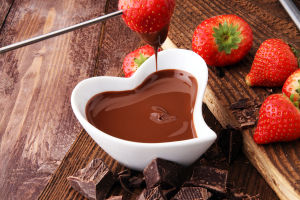Making French desserts at home may seem like a task for trained pastry chefs.
But what if you could bring that elegant Parisian bakery vibe into your own kitchen—with a bit of patience, the right steps, and an eye for detail?
In this article, we'll explore two of the most iconic and beloved French sweets: the airy, colorful macaron and the buttery, crisp mille-feuille. We'll walk through each dessert's detailed process so you can confidently recreate them at home and impress anyone who takes a bite.
1. The Macaron: A Bite of Parisian Charm
What It Is:
A macaron is a meringue-based sandwich cookie made with almond flour, egg whites, and sugar. Its smooth, domed top and ruffled "feet" make it instantly recognizable. While it's often confused with macaroons (which are coconut-based), the French macaron is a more delicate, refined treat.
Ingredients You'll Need (Yields 20 Macarons):
• 100g almond flour
• 100g powdered sugar
• 75g egg whites (room temperature)
• 100g granulated sugar
• Gel food coloring (optional)
• Filling: buttercream, ganache, or jam
Step-by-Step Process:
1. Sift Dry Ingredients:
Combine almond flour and powdered sugar. Sift together 2–3 times to ensure a smooth texture. Discard large bits.
2. Make the Meringue:
Beat egg whites on medium speed until foamy, then slowly add granulated sugar. Increase to high speed and beat until stiff peaks form. Add food coloring if desired.
3. Macaronage:
Gently fold the dry mixture into the meringue using a spatula. The batter should flow like lava and form a ribbon when lifted.
4. Piping:
Pipe small, even rounds onto parchment-lined baking sheets. Tap the sheets firmly on the counter to release air bubbles.
5. Resting:
Let macarons rest for 30–60 minutes until the surface is dry to the touch. This helps form their signature feet.
6. Bake:
Preheat oven to 300°F (150°C). Bake for 14–16 minutes, rotating the tray halfway.
7. Fill and Assemble:
Once cool, pair shells of similar size and fill with your chosen filling. Refrigerate for 24 hours for best texture.
Tips for Success:
• Use a kitchen scale for precision.
• Aged egg whites (left in the fridge for 1–2 days) yield more stable meringue.
• Avoid overmixing during the folding stage.
2. Mille-Feuille: Layers of Elegance
What It Is:
Also known as "Napoleon," mille-feuille means "a thousand sheets" in French—referring to its thin, flaky layers of puff pastry alternating with rich pastry cream. The top is traditionally glazed with fondant and chocolate.
Ingredients (Serves 6–8):
For the pastry:
• 1 sheet puff pastry (store-bought or homemade)
• Powdered sugar for dusting
For the pastry cream:
• 2 cups milk
• 4 egg yolks
• ½ cup granulated sugar
• ¼ cup cornstarch
• 2 tbsp unsalted butter
• 1 tsp vanilla extract
For the topping:
• Fondant or icing sugar glaze
• Melted chocolate for decoration
Step-by-Step Process:
1. Bake the Puff Pastry:
Preheat oven to 400°F (200°C). Roll out the pastry into a rectangle and poke all over with a fork. Place between two baking sheets to prevent puffing. Bake for 15–20 minutes until golden and crisp. Let cool, then cut into 3 equal rectangles.
2. Make the Pastry Cream:
In a saucepan, heat milk until just simmering. In a bowl, whisk egg yolks, sugar, and cornstarch until pale. Gradually add hot milk, whisking constantly. Return mixture to the pot and cook over medium heat, stirring, until thick. Remove from heat, stir in butter and vanilla, and cool completely.
3. Assemble:
Lay one pastry sheet on a tray. Pipe or spread half the pastry cream evenly. Repeat with the second layer and more cream. Top with the third pastry piece.
4. Decorate:
Spread fondant or icing glaze on top. Drizzle lines of melted chocolate across and use a toothpick to create a feathered effect. Chill before slicing.
Tips for Clean Slices:
• Use a serrated tool and wipe between cuts.
• Chill the dessert thoroughly for at least an hour before serving.
Why These Recipes Work
Macarons may require a little finesse, but once you master the technique, they're incredibly rewarding to make. The mille-feuille, though simple in concept, offers a satisfying blend of textures—crisp, creamy, and smooth—all in one bite. Both desserts emphasize balance: precision in ingredients, care in preparation, and beauty in presentation.
Final Thought: From Kitchen to Café
You don't need to fly to Paris to savor the magic of French pâtisserie. With a little attention to detail and a willingness to try, your own kitchen can become the birthplace of show-stopping sweets. Have you tried making a French dessert before—or do you plan to give one of these a go? Share your baking stories, photos, or questions. Your inner pastry chef might just be waiting to rise.
Let's get baking—the French way.


